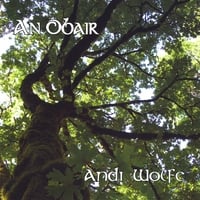
The second part of the day for September 5th was a visit to the Rock of Cashel.
This is a very impressive site to visit and it was worth every bit of getting soaked to see the ruins.

This hill was originally used as a fortress, but became a church holding early on in its history.

After entering the building and paying the admission fee, the first room to visit is the Vicar's Choral. There are quite a few artifacts presented in this room.

Most of these panels and artifacts date to medieval times.

Tools and articles from the cathedral are on display.

This is St. Patrick's Cross, or what's left of it.

There are a lot of interesting things to see in this restored building, and it does give a sense of what the interiors of these monumental buildings must have been like in the 12th and 13th centuries.

I didn't see any signage to give a clue as to what all of the figures and patterns mean, but they are still very interesting and beautiful to see.


The exit to the Vicar's Choral takes you right to the ruins of the cathedral and palace. "Monumental" doesn't even begin to describe this site.

The place was destroyed in the 16oo's during the Irish Confederate wars. The history of this place is pretty grim during that time.

With the downpours and heavy cloud cover, it was pretty challenging to take photos.

I did enjoy walking around the building to see the cemetery and surrounding countryside panoramas.

The high crosses are pretty impressive here.

This is the transition zone from the cathedral to the palace.

Another beautifully carved Celtic cross.

Dramatic view of the graveyard.

The tower was built in the early 1100's, using a dry stone technique.

The tower is 90 feet tall, so that gives you an idea about the rest of the buildings at the site.

The rock stands about 200 feet above the rest of the area, so it offers a good view of the surrounding countryside.

Magnificent.

This was one of the more picturesque cemeteries we visited in Ireland.


After walking all around the exterior (and waiting for the tour bus group to finish their tour), we entered the cathedral.

It must have been very beautiful. The skeleton is still beautiful, but I can imagine the interior space and the sounds of the choir during mass.



I'm not sure what that wooden building was supposed to be - it's a new construction.

There's a lot of algae and mold in some corners of the building.

Bits of plaster are still evident.

There are a lot of grave slabs and tombs still present inside the cathedral.




This place was awesome - not much more to add to that statement.


This scene gives a better sense of the destruction done by the English in the 1600's. It is so tragic that the art and architecture was treated in such a savage manner.
 If you take a trip to Ireland, make this a "must see" part of your itinerary!
If you take a trip to Ireland, make this a "must see" part of your itinerary!After this stop we headed southeast. We made it to Clonakilty near dark and we enjoyed supper and a pub in town where we met some people and shared some stories. I particularly enjoyed talking to a man named Tommy who was 94 years old, a farmer and a bee keeper. We had a bit of trouble understanding one another's accents, but we enjoyed the visit none-the-less.











No comments:
Post a Comment